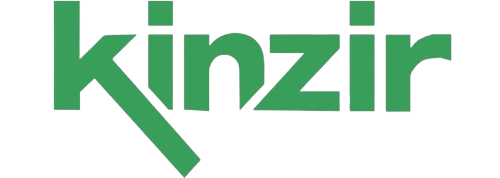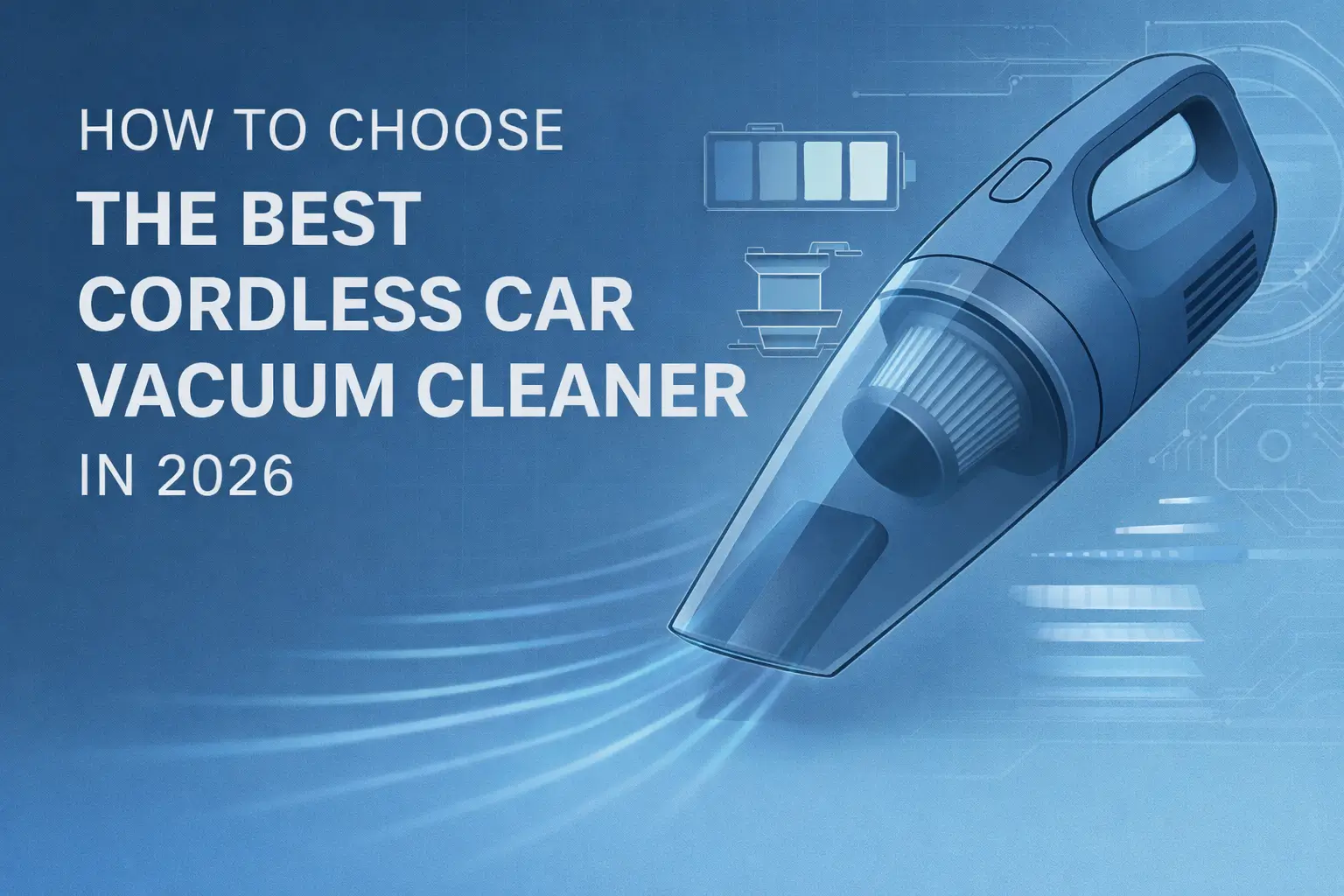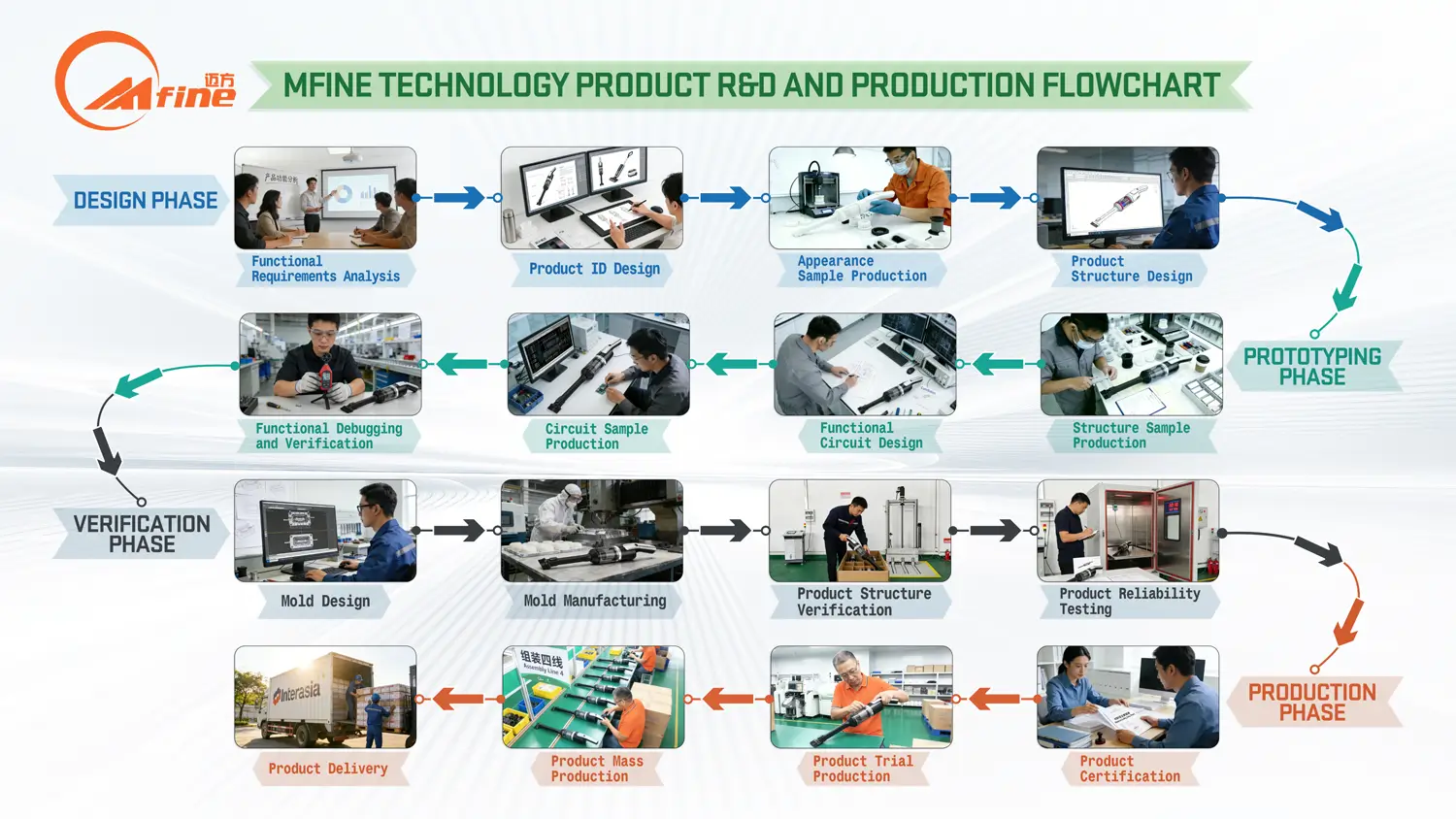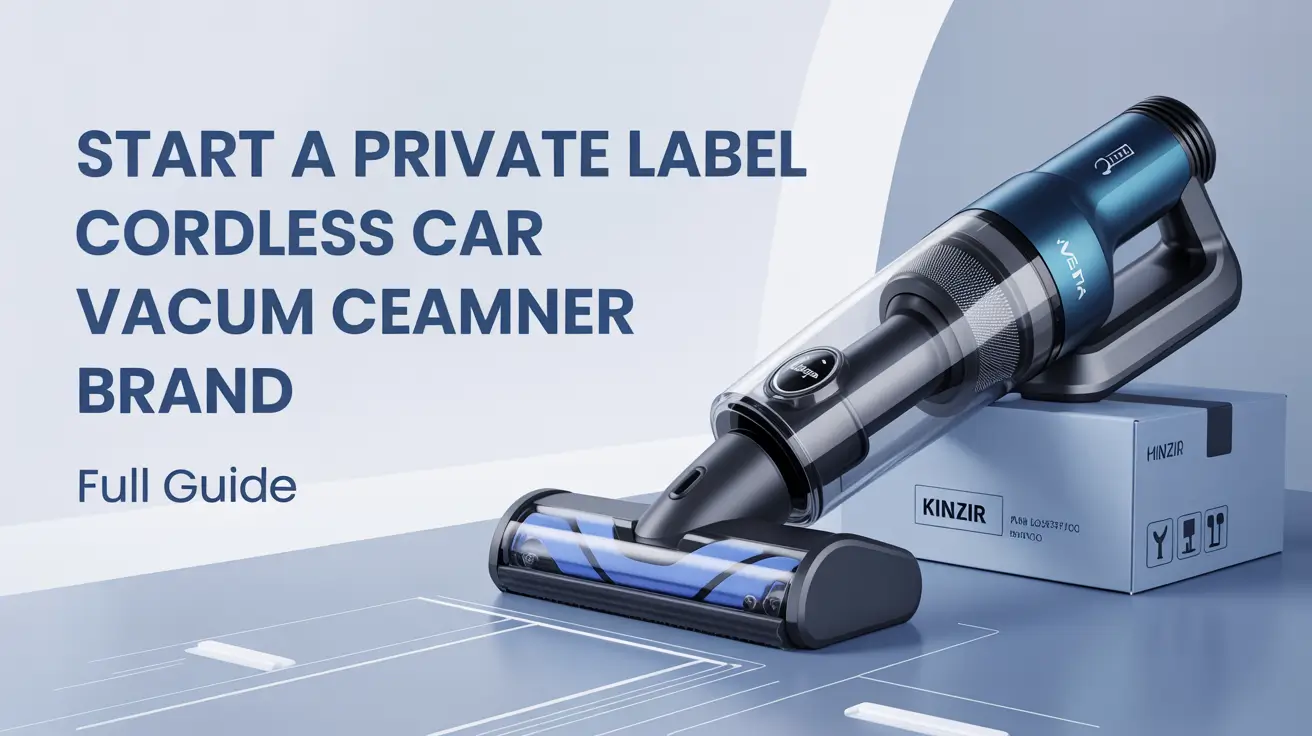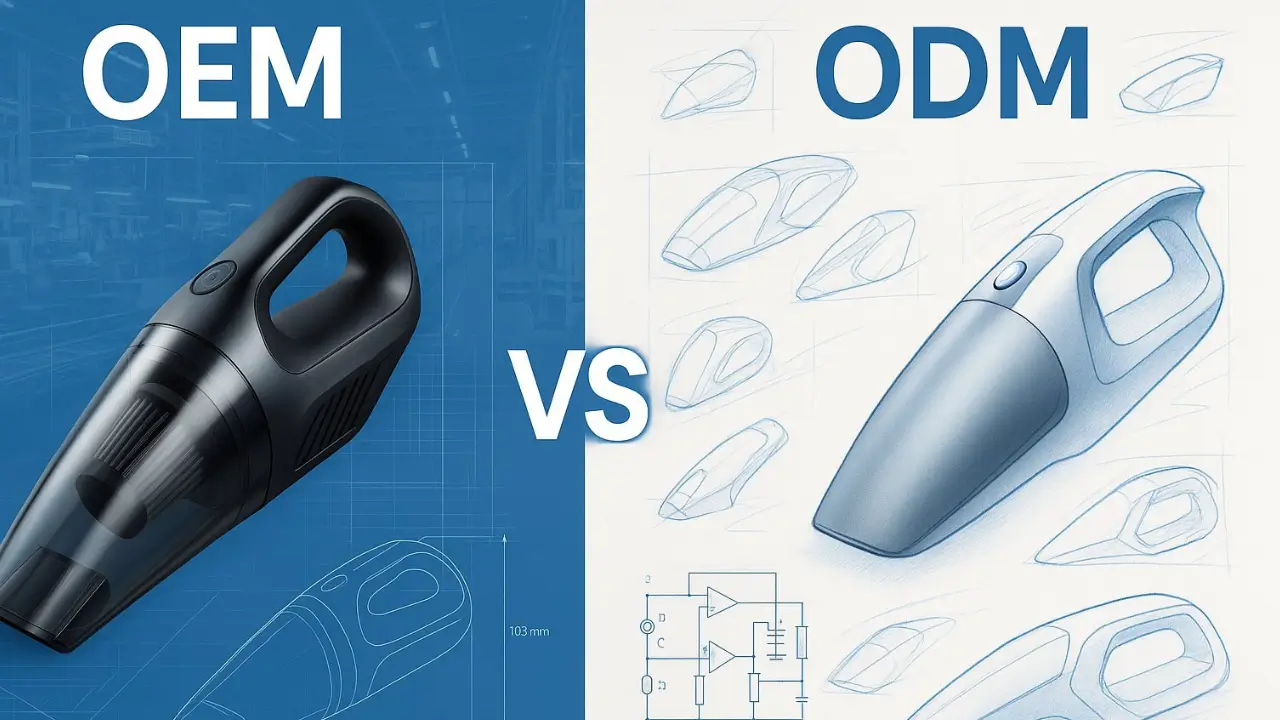CE Certification for Wireless Car Vacuum Cleaners is a mandatory requirement for selling these products in the European Union and other countries that recognize CE marking. This certification proves your product meets essential safety, health, and environmental standards required by EU law. Kinzir, the leading portable Mini rechargeable Car Vacuum manufacturer in Huizhou, Guangdong province of China, helps businesses navigate this complex process.
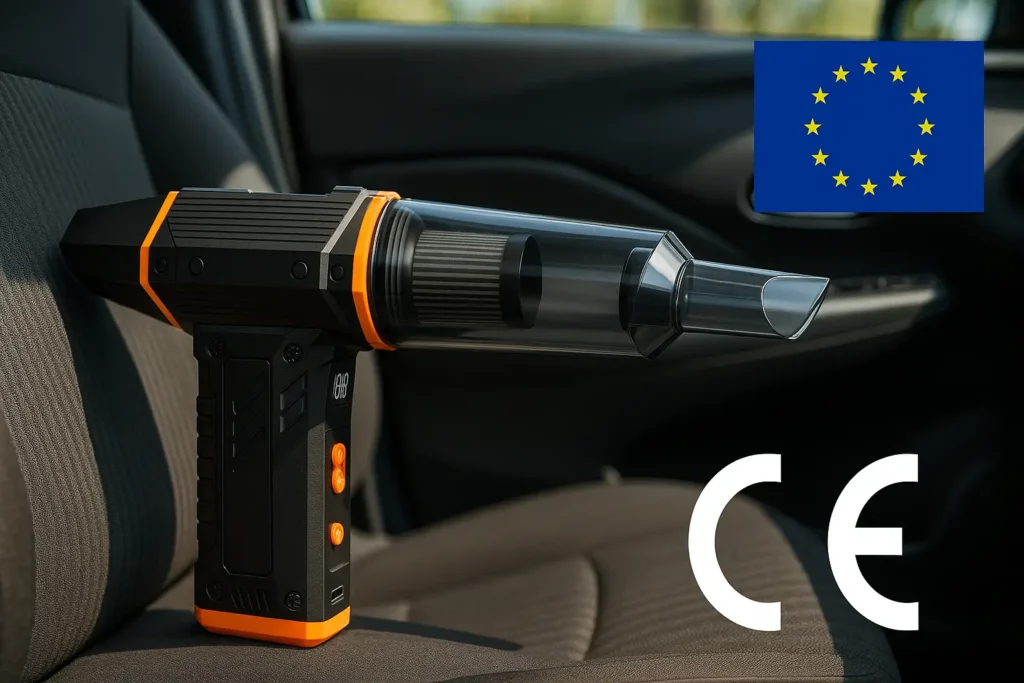
Getting your wireless car vacuum cleaner CE certified involves multiple steps and compliance requirements. You need to understand the specific standards that apply to your product and follow the proper testing procedures. The process can seem overwhelming without the right guidance.
This guide will walk you through everything you need to know about CE certification for wireless car vacuum cleaners. You’ll learn about the compliance process, costs, timelines, and common mistakes to avoid. We’ll also show you how Kinzir’s expertise can simplify your path to market.
What Is CE Certification?
CE stands for Conformité Européenne, which means “European Conformity” in French. This certification shows that your product meets EU safety, health, and environmental standards.
The CE mark is not optional for many products sold in the European Union. It’s a legal requirement that proves your product complies with EU directives and regulations.
When you see the CE mark on a product, it means the manufacturer has declared that the item meets all essential requirements set by European Union Directives. These directives cover different product categories like electronics, machinery, toys, and medical devices.
Key aspects of CE certification:
- Mandatory for specific product categories
- Shows compliance with EU regulations
- Required before selling in EU markets
- Manufacturer’s declaration of conformity
The product certification process involves testing your product against relevant EU standards. You must also create technical documentation that proves compliance with all applicable directives.
CE certification covers various EU directives depending on your product type. Common directives include the Low Voltage Directive, EMC Directive, and Machinery Directive.
Product compliance means your item meets all safety and performance requirements. This includes electrical safety, electromagnetic compatibility, and mechanical safety standards.
The CE mark allows free movement of goods within the European Economic Area. Without proper certification, customs can stop your products at borders.
You cannot sell most manufactured products in the EU without meeting these compliance certification requirements.
The CE Compliance Process For Wireless Car Vacuum Cleaners
Wireless car vacuum cleaners must follow specific steps to earn CE certification. You need to identify the right standards, test your product, create documentation, and properly mark your device.
Identify Applicable Standards
You must determine which EU directives apply to your wireless car vacuum cleaner. The Low Voltage Directive covers electrical safety for devices operating between 50-1000V AC or 75-1500V DC.
The Electromagnetic Compatibility Directive ensures your vacuum won’t interfere with other electronic devices. Your product must also comply with the RoHS Directive, which restricts hazardous substances in electrical equipment.
The Batteries and Accumulators Directive applies to your vacuum’s rechargeable battery system. This directive sets rules for battery design, labeling, and disposal.
Key harmonised EN standards include:
- EN 60335 for household appliance safety
- EN 55014 for EMC requirements
- EN 62133 for battery safety
You should consult the Official Journal of the European Union for the most current standard versions. These standards provide detailed technical requirements your product must meet.
Product Testing
You must test your wireless car vacuum cleaner at an accredited testing lab. The lab will verify compliance with all applicable harmonised standards.
Safety testing under EN 60335 checks electrical hazards, thermal protection, and mechanical safety. EMC testing per EN 55014 measures electromagnetic emissions and immunity to interference.
Battery testing follows EN 62133 requirements. This covers overcharge protection, short circuit safety, and thermal stability. Your vacuum’s motor and charging system need separate evaluation.
Testing must cover normal use and reasonably foreseeable misuse. The lab will provide detailed test reports showing compliance or non-compliance with each requirement.
You can use an in-house lab if it meets accreditation standards. However, most manufacturers choose independent testing facilities for credibility.
Compile A Technical File
Your technical file must contain complete documentation proving CE compliance. This file stays with you and isn’t submitted to authorities unless requested.
Required documents include:
- Design drawings and specifications
- Risk assessment documentation
- Test reports from accredited labs
- User instructions and safety warnings
- Circuit diagrams and component lists
The technical file must cover your vacuum’s electrical design, battery system, and mechanical construction. Include material safety data sheets for all components.
Your risk assessment should identify potential hazards and explain how your design eliminates or reduces risks. Document any protective measures built into the product.
Keep the technical file for 10 years after your last manufactured unit. Authorities can request this documentation during market surveillance activities.
Draft The EU Declaration Of Conformity
You must create an EU Declaration of Conformity stating your product meets all applicable requirements. This document legally declares your vacuum cleaner complies with relevant directives.
The declaration must include:
- Your company name and address
- Product description and model number
- List of applicable directives and standards
- Your signature and date
Reference the specific versions of harmonised standards you used. Include EN 60335, EN 55014, and EN 62133 with their publication dates.
The declaration must be in the official language of the country where you sell the product. Keep the original with your technical file and provide copies to distributors.
Update the declaration whenever you modify the product design or applicable standards change. Each product variant may need its own declaration.
Affix The CE Mark
You must place the CE logo visibly on your wireless car vacuum cleaner. The mark should be on the product itself, not just the packaging.
CE logo placement must follow strict rules:
- Minimum height of 5mm
- Correct proportions and spacing
- Permanent and legible marking
- Visible during normal use
Place the CE mark on the vacuum’s main body where users can easily see it. If the product is too small, you can put the mark on packaging and user documentation.
Your product labeling requirements include the CE mark, manufacturer information, and model number. Include any warning symbols required by applicable standards.
The CE mark must appear before you place the product on the EU market. Don’t affix the mark until you complete all compliance steps and create your declaration of conformity.
Why Choose Kinzir For Your CE-Certified Wireless Car Vacuum Cleaner
Kinzir offers reliable CE-certified wireless car vacuum cleaners that meet European safety standards. You can trust these products have passed strict testing requirements.
Quality comes first with Kinzir’s manufacturing process. Each vacuum cleaner goes through multiple quality checks before reaching customers.
The company provides clear documentation for all CE certifications. You receive proof that your vacuum meets safety and performance standards.
Key benefits of choosing Kinzir:
- Full CE compliance documentation
- Rigorous quality testing
- Reliable customer support
- Competitive pricing
- Fast shipping options
Kinzir’s wireless car vacuums feature powerful suction and long battery life. The lightweight design makes cleaning your car easy and quick.
You get warranty protection with every purchase. Kinzir stands behind their CE-certified products with responsive customer service.
Technical specifications are clearly listed for each model. You know exactly what performance to expect from your vacuum cleaner.
The CE marking on Kinzir products shows compliance with:
| Standard | Purpose |
|---|---|
| EMC Directive | Controls electromagnetic interference |
| Low Voltage Directive | Ensures electrical safety |
| RoHS Directive | Restricts harmful substances |
Kinzir maintains consistent quality across all production batches. Your vacuum cleaner will perform as expected with proper CE certification backing.
Typical Timeline And Cost Of CE Approval
The time and cost for CE certification depends on your product type and complexity. Simple products may take 4-8 weeks. Complex products can take 6-12 months or longer.
Basic Timeline Factors:
- Product testing requirements
- Documentation preparation
- Notified Body involvement
- Technical file complexity
| Product Type | Timeline | Cost Range |
|---|---|---|
| Simple electronics | 4-8 weeks | $2,000-$8,000 |
| Medical devices | 6-18 months | $10,000-$50,000+ |
| Machinery | 8-16 weeks | $5,000-$20,000 |
| Toys | 6-10 weeks | $3,000-$10,000 |
You’ll pay for testing, documentation, and consultant fees. Testing costs vary by product and required standards. A basic EMC test might cost $2,000-$5,000.
Main Cost Components:
- Laboratory testing fees
- Consultant or certification body fees
- Documentation preparation
- Translation costs (if needed)
Products requiring Notified Body assessment take longer and cost more. Medical devices and some machinery need this extra step. The Notified Body review adds 2-6 months to your timeline.
You can reduce time by preparing complete documentation early. Having all technical files ready speeds up the process. Poor preparation causes delays and extra costs.
Budget extra time for any issues found during testing. Failed tests mean retesting and more fees. Plan for 20-30% more time than initial estimates.
Common Pitfalls And How To Avoid Them
Many companies fail to set up proper Quality Management Systems (QMS) before seeking CE certification. You must implement ISO 9001 or similar standards early in your process.
Missing documentation is another major problem. Keep detailed records of all testing, risk assessments, and design changes. This protects you during market surveillance checks.
Some manufacturers ignore their ongoing obligations after getting CE marking. You must monitor your products continuously and report any safety issues to authorities.
Importer responsibilities are often overlooked. If you import CE-marked products, you become legally responsible for ensuring they meet EU requirements. Check all documentation before selling.
| Common Mistake | How to Avoid It |
|---|---|
| Skipping post-market surveillance | Set up monitoring systems |
| Incomplete technical files | Use detailed checklists |
| Wrong conformity procedures | Consult notified bodies |
Product liability issues arise when companies rush through certification. Take time to do proper risk assessments and safety testing. This prevents costly recalls later.
Market surveillance authorities regularly check products in stores. They can ban your products if documentation is missing or incorrect. Always keep your technical files updated.
Consumer protection laws are strict in the EU. You face legal action if your products cause harm due to poor certification processes. Work with qualified testing labs and certification bodies.
Never assume CE marking from one product applies to variations or new models. Each product needs its own compliance assessment.
Case Study: Kinzir VC50 Wireless Car Vacuum Cleaner
The Kinzir VC50 achieved CE certification by meeting EMC Directive 2014/30/EU and LVD 2014/35/EU requirements. The manufacturer selected appropriate standards, completed testing protocols, assembled technical documentation, and gained market access across Europe.
Standards Selected
The Kinzir VC50 required compliance with two main directives. The EMC Directive 2014/30/EU applied because the device contains electronic components that could cause interference.
The LVD 2014/35/EU covered the product since it operates on DC power above 75 volts when charging. This directive ensures electrical safety for users.
For EMC compliance, the manufacturer selected EN 55014-1:2017 for emissions testing. This standard measures electromagnetic disturbance from household appliances.
They also chose EN 55014-2:2015 for immunity testing. This standard checks how well the device works when exposed to electromagnetic interference.
For electrical safety, EN 60335-1:2012 was selected. This standard covers general safety requirements for household appliances.
The specific Part 2 standard EN 60335-2-2:2010 applied to vacuum cleaners. This covers particular safety requirements for this product type.
Testing
EMC emissions testing measured the device’s electromagnetic output. The vacuum cleaner passed conducted emissions tests on the AC power cord during charging.
Radiated emissions testing checked wireless signals from the motor and electronics. The device met Class B limits for residential use.
Immunity testing verified the vacuum continued working properly when exposed to interference. Tests included electrostatic discharge up to 8kV and radiated field immunity up to 10V/m.
Electrical safety testing examined insulation resistance and leakage current. The charging circuit passed tests for protection against electric shock.
Ground continuity testing confirmed proper electrical connections. The device met requirements for protective earthing.
Temperature rise testing measured heat generation during operation. All components stayed within safe temperature limits during continuous use.
Drop testing verified the housing integrity after impacts. The vacuum maintained electrical safety after standard drop tests.
Technical File
The technical file included detailed product specifications and circuit diagrams. Component lists showed all electronic parts with safety certifications.
Risk assessment documentation identified potential hazards. The manufacturer addressed each risk through design changes or safety warnings.
Test reports from the notified body provided evidence of compliance. These reports covered all applicable standards and test procedures.
User manual content demonstrated proper safety instructions. Warning labels and maintenance procedures met regulatory requirements.
Quality management documentation showed manufacturing controls. The file included procedures for maintaining consistent product quality.
Declaration of conformity formally stated compliance with applicable directives. This document allowed legal placement of the CE mark.
Market Result
The Kinzir WVC1 launched successfully across EU markets after receiving CE certification. The product gained distribution in major retail chains within six months.
Sales data showed strong performance in Germany, France, and Italy. The CE mark provided consumer confidence in product safety and quality.
The manufacturer avoided costly market entry delays. CE certification enabled immediate product launch without additional country-specific testing.
Customer feedback highlighted the product’s reliability and safety features. No safety incidents or recalls occurred during the first year of sales.
The investment in proper CE certification process paid off through market access. The product achieved profitability within the first year of European sales.
CE Marking Beyond The EU: Mutual Recognitions
Some countries have mutual recognition agreements with the EU that accept CE marking. Other nations require their own specific certifications but may streamline the process for products already CE marked.
UKCA
The UK Conformity Assessed (UKCA) marking replaced CE marking in Great Britain after Brexit. You must use UKCA marking for most products sold in England, Scotland, and Wales.
UKCA applies to the same product categories as CE marking:
- Electrical equipment
- Machinery
- Medical devices
- Construction products
- Toys
You can still use CE marking in Northern Ireland for EU market access. However, Great Britain requires UKCA marking for local sales.
The technical requirements for UKCA are nearly identical to CE marking. You often can use the same test reports and documentation. This makes the transition easier for manufacturers.
Key differences include:
- Different notified body numbers
- UK-based authorized representatives required
- Separate declaration of conformity needed
PSE (Japan)
Japan’s Product Safety Electrical Appliance and Material Safety Law requires PSE marking for electrical products. The country does not have a mutual recognition agreement with the EU for CE marking.
PSE has two categories. Diamond PSE covers high-risk electrical items like power supplies and transformers. Round PSE applies to lower-risk products like household appliances.
You cannot use CE marking alone in Japan. However, Japanese authorities may accept some CE test data to reduce testing requirements. This can speed up the PSE certification process.
PSE requirements include:
- Testing by approved Japanese laboratories
- Japanese importer registration
- Annual factory inspections for some products
The process typically takes 2-4 months for round PSE and 4-6 months for diamond PSE.
FCC (USA)
The Federal Communications Commission (FCC) regulates electronic devices that emit radio frequencies in the United States. CE marking has no recognition under FCC rules.
FCC has three authorization types:
- Verification – Manufacturer self-declares compliance
- Declaration of Conformity – Testing required but no FCC approval needed
- Certification – FCC approval required before sale
You must complete separate FCC testing even if your product has CE marking. However, some test procedures overlap between CE and FCC requirements.
FCC certification requires:
- Testing at FCC-recognized laboratories
- US agent for equipment authorization
- FCC ID number for certified products
Customs clearance becomes smoother when you have proper FCC authorization. Products without correct FCC marking face delays or rejection at US borders.
How To Get Started With Your CE-Certified Order
Getting CE certification for your product involves four main steps. You’ll work with Kinzir R\&D from initial contact through prototype approval.
Contact Kinzir R\&D
Start by calling Kinzir R\&D at their main office number. You can also email them through their website contact form. They respond to inquiries within 24 hours on business days.
Tell them about your product type and target market. Be specific about what you’re manufacturing. For example, say “wireless headphones for consumer use” instead of “electronic device.”
Mention your timeline for CE certification. Most projects take 6-12 weeks depending on product complexity. Rush orders may cost extra but can be completed faster.
The initial consultation is free. They’ll ask about your product specifications and manufacturing location. This helps them determine which CE directives apply to your product.
Receive Our Checklist
Kinzir R\&D sends you a custom checklist within 2 business days. This checklist lists all documents and tests your product needs for CE certification.
The checklist includes:
- Technical documentation requirements
- Safety testing standards
- EMC testing protocols
- Declaration of Conformity templates
Each item shows if it’s required or optional for your product. Required items are marked with red text. Optional items appear in blue text.
Review the checklist carefully before moving forward. Some items take weeks to complete. Plan your timeline accordingly.
Contact Kinzir R\&D if any checklist items are unclear. They provide free clarification during business hours.
Submit Technical Query
Fill out the technical query form completely. Include your product’s electrical specifications, materials list, and intended use. Missing information delays the process.
Upload these documents with your form:
- Product schematics
- Component data sheets
- User manual draft
- Product photos
The technical team reviews your submission within 5 business days. They check if your product meets CE requirements. Any issues are highlighted in their response.
You’ll receive a detailed report about compliance gaps. This report explains what changes are needed. It also estimates testing costs and timelines.
Make the recommended changes before prototype submission. This saves time and money in later stages.
Approve Prototype
Send your updated prototype to Kinzir R\&D’s testing facility. Use their shipping address and include the provided reference number. Ship via tracked courier service.
The prototype undergoes safety and EMC testing. Testing takes 2-4 weeks depending on your product type. You receive weekly progress updates via email.
Kinzir R\&D provides a test report when finished. This report shows all test results and compliance status. Failed tests are explained in detail.
You can request prototype modifications if tests fail. Minor changes often solve compliance issues. Major changes may require new testing.
Approve the final prototype once all tests pass. This triggers preparation of your CE Declaration of Conformity. You can then apply CE marking to your products.
Frequently Asked Questions
CE certification involves specific steps, costs, and requirements that vary by product type. You can verify authentic CE markings through official channels and databases.
What is the process for obtaining CE certification for products?
You must first identify which EU directives apply to your product. Each directive has specific requirements you need to meet.
You then conduct the required conformity assessment procedures. This may include testing, quality system evaluation, or technical documentation review.
After completing assessments, you prepare the Declaration of Conformity. This document states your product meets all applicable requirements.
You affix the CE marking to your product and keep all documentation for at least 10 years. The process typically takes 4-12 weeks depending on product complexity.
How can one verify if a product has a valid CE certification?
You can check the European Commission’s NANDO database for notified bodies. This shows which organizations can issue CE certificates.
Look for the Declaration of Conformity from the manufacturer. This document must be available upon request and contains specific technical details.
Verify the CE marking appears correctly on the product. It must be visible, legible, and at least 5mm high.
Contact the manufacturer directly to request certification documentation. They are legally required to provide this information.
What are the average costs associated with acquiring CE certification?
Testing costs range from $2,000 to $25,000 depending on product complexity. Electronic products typically cost more than simple mechanical items.
Notified body fees add $3,000 to $15,000 for products requiring third-party assessment. Not all products need notified body involvement.
Documentation preparation costs $1,000 to $5,000 if you hire consultants. You can reduce costs by preparing documents yourself.
Annual surveillance audits cost $2,000 to $8,000 for products with ongoing quality system requirements.
Is CE certification applicable for products marketed in the USA?
CE marking is not required for products sold only in the United States. It applies exclusively to the European Economic Area.
You need different certifications for the US market, such as FCC for electronics or FDA for medical devices. These replace CE requirements.
Products sold in both markets need separate certifications. CE marking alone does not satisfy US regulatory requirements.
Some manufacturers choose CE certification for US products to prepare for future European sales. This is optional, not mandatory.
What are the typical requirements that products must meet to be CE certified?
Your product must meet essential health and safety requirements defined in applicable EU directives. These cover electromagnetic compatibility, safety, and performance standards.
You need complete technical documentation including design files, risk assessments, and test reports. This proves compliance with all requirements.
Quality management systems are required for certain product categories. These ensure consistent manufacturing processes and product quality.
Labeling requirements include CE marking, manufacturer information, and user instructions in local languages. Missing labels can result in market rejection.
Which specific product categories are legally obligated to have CE marking?
Medical devices including surgical instruments, diagnostic equipment, and implants require CE marking. This covers everything from thermometers to MRI machines.
Electronic products like computers, phones, and appliances need CE certification. Radio equipment and telecommunications devices have additional requirements.
Machinery including industrial equipment, power tools, and construction machines must have CE marking. Safety systems and protective equipment also require certification.
Toys, personal protective equipment, and construction products need CE marking before sale. Gas appliances and pressure equipment have specific directive requirements.
